Are you worried about Bambi causing destruction in your garden? Worry not! Here are the Best Deer Resistant Plants to keep them away!
While no plant is entirely deer resistant, Bambi tends to shy away from plants with unpalatable characteristics such as thorny stems, strong scent, bitter flavor, or unappealing texture. Let’s have a look at the Best Deer Resistant Plants!
Are dahlias deer resistant?
Best Deer Resistant Plants
1. French Marigold

Botanical Name: Tagetes
USDA Zones: 2-11
The French Marigolds bloom in a bright range of colors over a longer time and are loved by most gardeners. Their strong fragrance keeps the deer from feeding on them.
2. Sunflowers
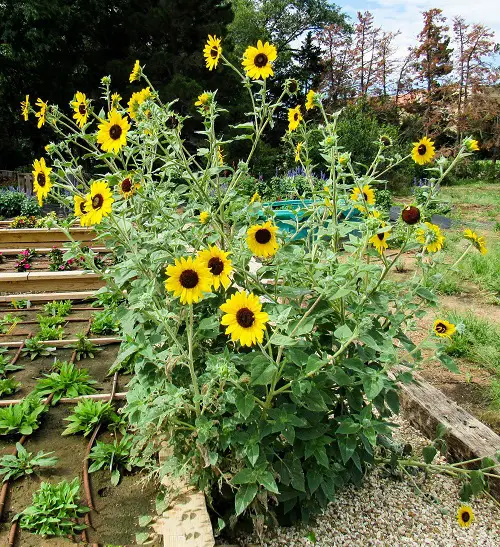
Botanical Name: Helianthus
USDA Zones: 4-9
Deer do not like to munch on these big, bright, sunny flowers because of the rough texture of their leaves. So, you can plant as many as you want in your garden without worrying!
3. Butterfly Bush
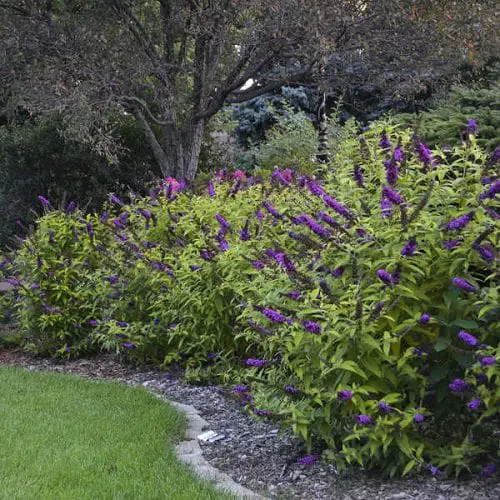
Botanical Name: Buddleja
USDA Zones: 5-9
The Butterfly Bush is native to China and Japan and is excellent for planting along the parameters of your garden to keep deer away. It also attracts bees, butterflies, and hummingbirds.
4. Aster
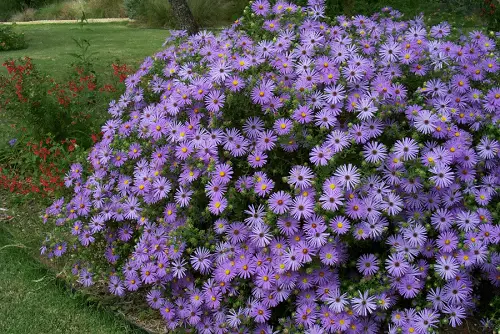
Botanical Name: Aster
USDA Zones: 3-8
The typical purple or pink Aster flower is both deer and disease-resistant. Deer do not like to munch on this perennial because of its texture.
5. Heliotrope

Botanical Name: Heliotropium
USDA Zones: 10-11
Heliotrope is another plant that deer detest because of its strong scent and sandpaper-like foliage texture. So, you could be sure that these beautiful purple flowers would not be eaten away.
Do Deer Eat Tomato Plants
6. Foxgloves

Botanical Name: Digitalis
USDA Zones: 4-9
Deer tend to avoid any toxic plants, including foxglove. You can grow this plant in rows around the garden border to deter deer besides beautifying the place.
7. Pot Marigold

Botanical Name: Calendula officinalis
USDA Zone: 9-11
The happy, bright, yellow flowers are great for keeping deer away because of the strong fragrance. They also work well to stop bunnies from munching in your garden.
8. Lily of the Valley

Botanical Name: Convallaria majalis
USDA Zone: 3-8
The bell-shaped white flowers historically symbolize feminity. But it is their poisonous nature that deters deer from feeding on them.
9. Lamb’s Ear
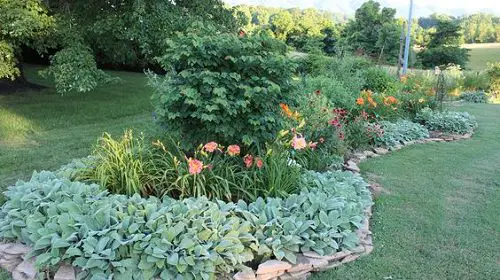
Botanical Name: Stachys byzantina
USDA Zone: 4-7
Deer do not find this plant appetizing because of its velvety-soft texture. You can choose this popular plant for ground cover, too!
10. African Lily
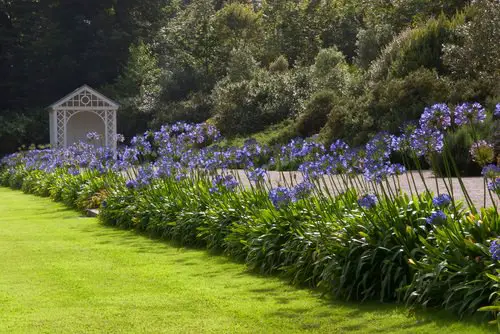
Botanical Name: Agapanthus africanus
USDA Zone: 8-10
African Lily bears big drumstick flower heads from midsummer. You can grow this plant in a container or outdoors to repel deer from the yard.
11. Daffodil

Botanical Name: Narcissus
USDA Zone: 3-8
If you want to keep deer at bay and lighten up your garden, you should grow Daffodils. They won’t come near them because of their toxicity.
12. Zinnias
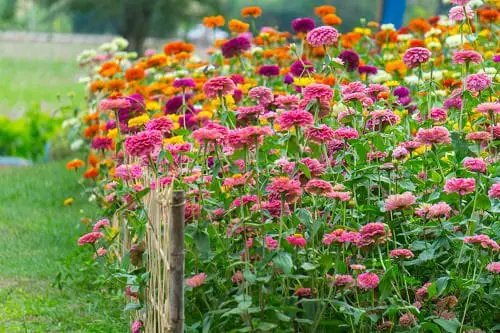
Botanical Name: Zinnia
USDA Zone: 3-10
Most gardeners love the bright colors of Zinnias and often choose to grow them in a range of shades. Deer do not like the rough texture of the leaves and would mostly stay away from the plant.
Do Deer Eat Zinnias
13. Peonies

Botanical Name: Paeonia
USDA Zone: 3-8
This is another beautiful, bright flowering plant that will not only liven up your garden but keep the four-legged creatures away. Deer do not like the flavor of the flowers. Their powerful fragrance also acts as a deterrent to them.
14. Bearded Iris

Botanical Name: Iris germanica
USDA Zone: 3-10
The fragrance of popular Bearded Iris is something most gardeners love. Deer, on the other hand, do not like the strong scent at all and stay away.
15. Bleeding Hearts
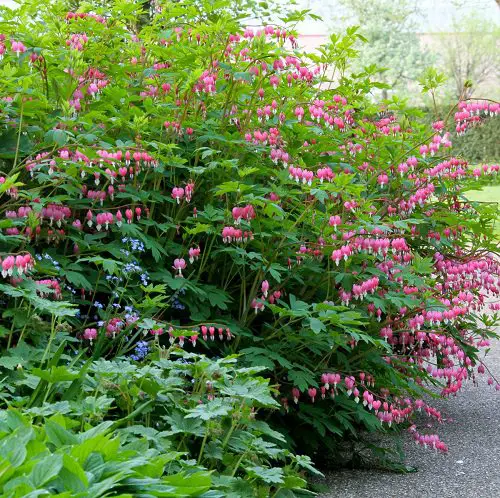
Botanical Name: Lamprocapnos
USDA Zone: 3-9
Even though these plants are known for their beauty, they’re also poisonous. Smart deer know to steer clear from them unless they want to suffer from some severe repercussions.
Do Deer Eat Coleus?
16. Purple Coneflowers

Botanical Name: Echinacea
USDA Zone: 3-8
The purple coneflowers are known to attract bees, butterflies, and hummingbirds, but deer. Purple coneflowers are toxic to them.
17. Mint

Botanical Name: Mentha
USDA Zone: 3-8
The smell of mint leaves is too much for deer, and they cannot stand the highly aromatic foliage of this herb.
18. Heather
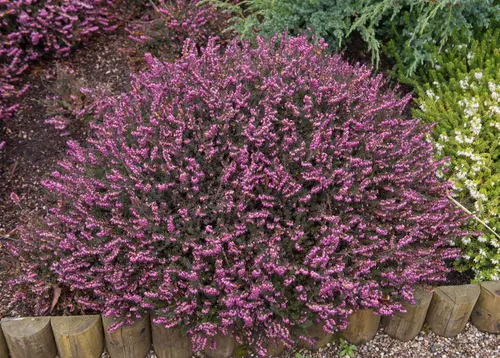
Botanical Name: Calluna
USDA Zone: 4-6
They look breathtaking when planted in giant swathes. The animals do not find them appealing enough to munch on these beauties because of the texture.
19. Lungwort
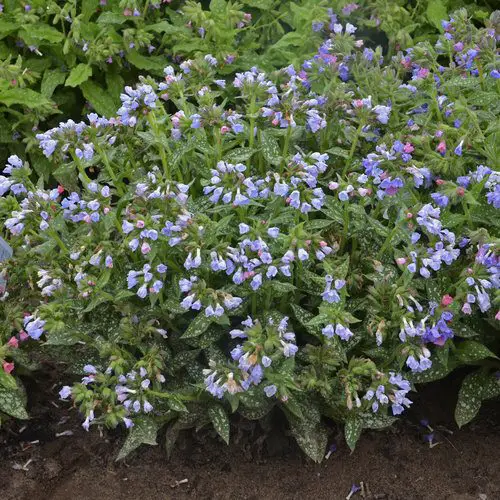
Botanical Name: Pulmonaria officinalis
USDA Zone: 3-8
Lungwort ‘Ocupol’ is a semi-evergreen perennial with clear pale blue flowers. This is a plant that these animals completely detest.
20. Sage
Botanical Name: Salvia
USDA Zone: 5-10
Apparently, the aroma of the plant seems to be stinking for the deer, and they avoid it for their meal.
Do Deer Eat Geraniums?
21. Lavender
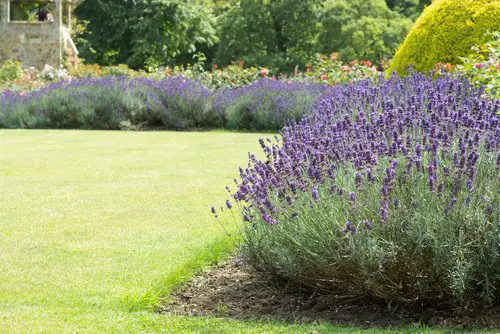
Botanical Name: Lavandula
USDA Zone: 5-9
Lavender is one of the classic perennial herbs that’s grown for its strong scent and beauty. However, deer do not appreciate its fragrance and stay away.
22. Oriental Poppies
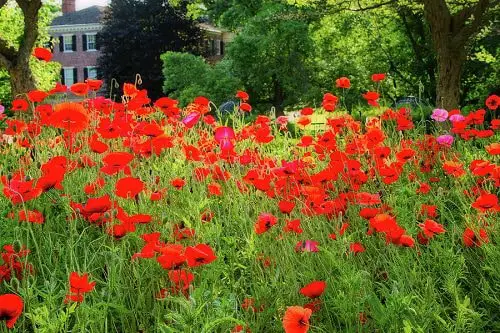
Botanical Name: Papaver orientale
USDA Zone: 3-9
These gorgeous beauties are undoubtedly one of the most stunning and elegant flowering plants, but they are also toxic. This is the reason why deer do not wish to come near them.
23. Crape Myrtle
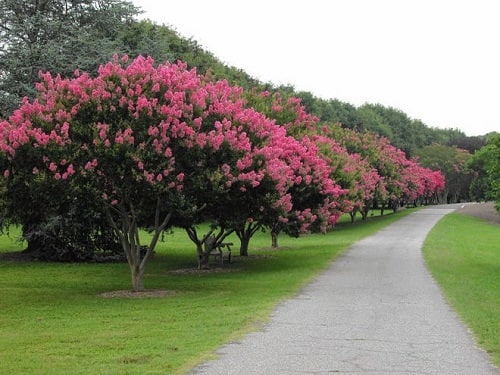
Botanical Name: Lagerstroemia
USDA Zone: 7-10
Crape myrtles come in a variety of hybrids with bright, lacy flowers. Deer will seldom eat any variety as they find the texture of the foliage pretty unpalatable for their taste.
24. Houseleeks
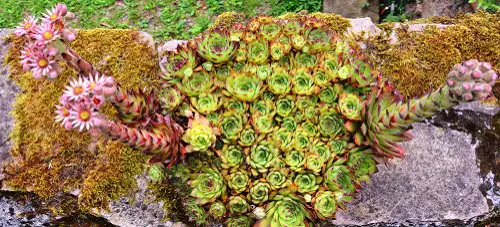
Botanical Name: Sempervivum tectorum
USDA Zone: 3-8
Houseleeks form attractive rosettes that tolerate both shade and sun. This succulent is unappealing to team deer because they are poisonous to them.
25. Fountain Grass
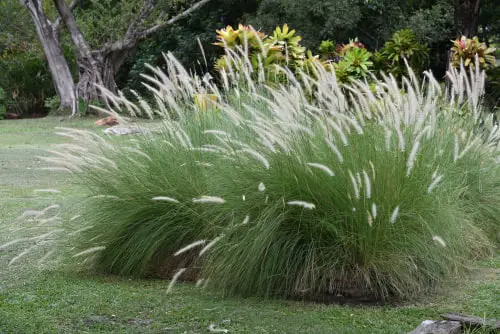
Botanical Name: Pennisetum setaceum
USDA Zone: 9-10
For landscapes that deer most frequent, there are numerous options of ornamental grasses that these animals would rather not eat. This perennial grass will add charm to your garden.
26. Rosemary
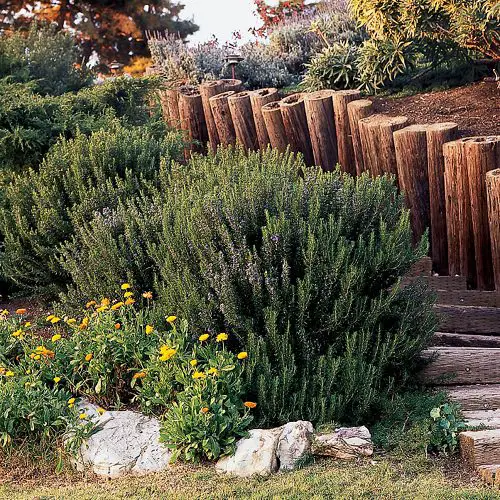
Botanical Name: Salvia rosmarinus
USDA Zone: 6-10
Rosemary is not only used for culinary seasoning but also looks beautiful in the garden. Deer do not like its strong, piney scent and usually keep a distance.
27. Lenten Rose
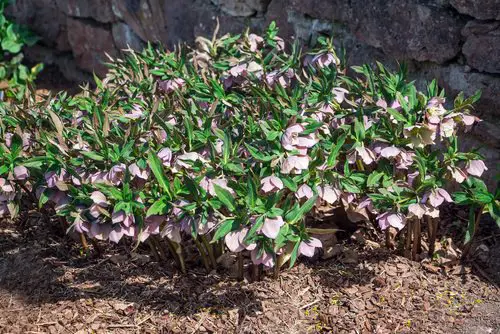
Botanical Name: Helleborus orientalis
USDA Zone: 4-9
The Lenten rose is an early bloomer in the season and is loved by many gardeners. They are poisonous plants you can grow in the garden.
28. Bee Balm
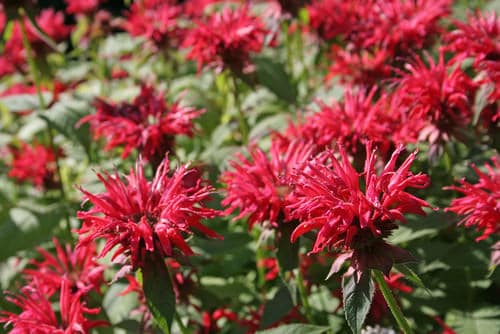
Botanical Name: Monarda
USDA Zone: 3-9
This beautiful flowering plant attracts butterflies and hummingbirds but not deer. These animals find the minty orange fragrance very ‘stinky’ for their taste.
29. Sweet Woodruff
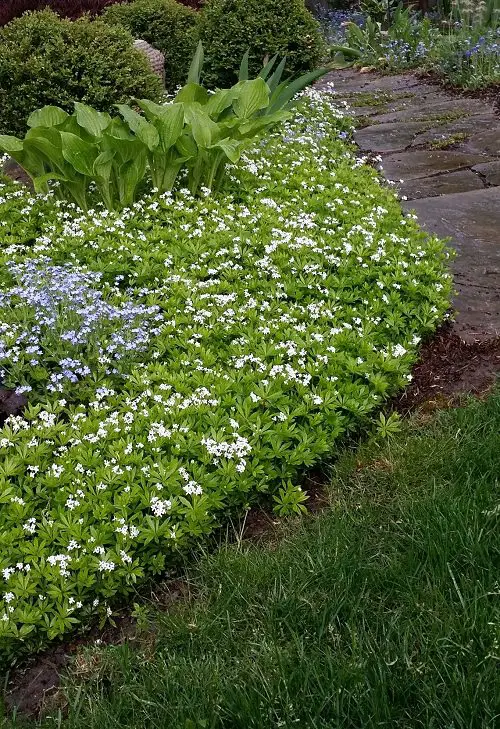
Botanical Name: Galium odoratum
USDA Zone: 4-8
30. Verbena
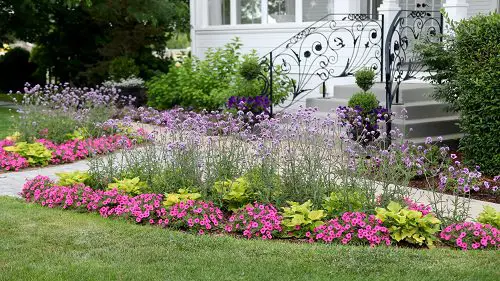
Botanical Name: Verbena
USDA Zone: 9-11
Do Deer Eat Verbena
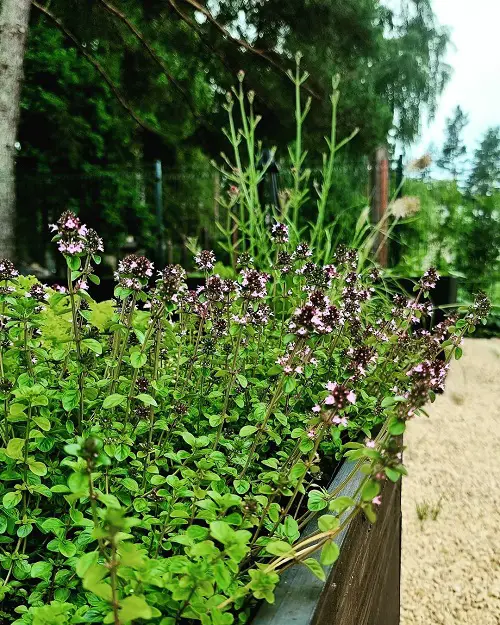
Botanical Name: Thymus vulgaris
USDA Zone: 4-9
Thyme is a fragrant herb with small leaves commonly used in cooking. It is a perennial plant that is drought-resistant and can grow in various soil types.
32. Yarrow
Botanical Name: Achillea millefolium
USDA Zone: 3-9
Yarrow is a perennial herb with fern-like leaves and small, flat-topped clusters of flowers. It is often used in natural medicine to treat various ailments and is also a popular addition to gardens.
Do Deer Eat Mums?
33. Sedum
Botanical Name: Sedum spp.
USDA Zone: 3-10
Sedum is a succulent plant with thick, fleshy leaves that store water. It is often used in rock gardens or as ground cover and comes in various shapes, sizes, and colors.
34. Daylily
Botanical Name: Hemerocallis spp.
USDA Zone: 3-9
35. Lantana
Botanical Name: Lantana camara
USDA Zone: 9-11
Lantana is a colorful flowering plant with small, clustered flowers blooming in shades of red, orange, yellow, and purple.
36. Coreopsis
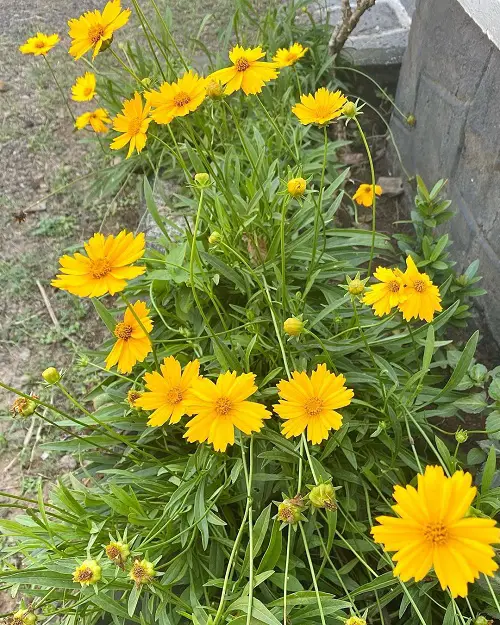
Botanical Name: Coreopsis spp.
USDA Zone: 4-9
Coreopsis is a perennial plant with daisy-like flowers that come in shades of yellow, orange, and red. It is a hardy plant that is easy to care for and can be used as a border or in rock gardens.
37. Catmint
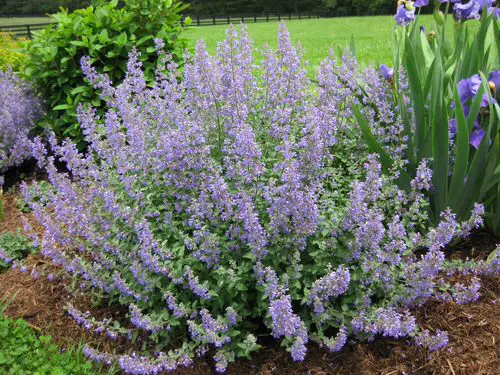
Botanical Name: Nepeta spp.
USDA Zone: 3-8
Catmint is a perennial herb with small, lavender-blue flowers that bloom in early summer. It is often used in gardens for its attractive foliage and ability to attract bees and butterflies.
38. Baby’s Breath
Botanical Name: Gypsophila
USDA Zone: 3-9
Baby’s Breath is a flowering plant with delicate white or pink flowers often used as filler in bouquets and arrangements. It is a hardy plant that is easy to care for and can be used in gardens or as cut flowers.
39. Marigold
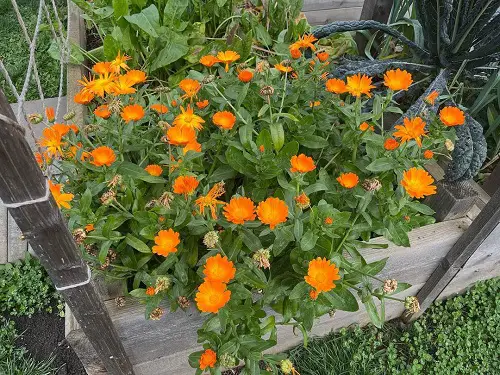
Botanical Name: Tagetes spp.
USDA Zone: Annual in most zones; some varieties may overwinter in Zones 8-11
Marigolds are annual plants with bright, colorful flowers that come in shades of yellow, orange, and red. They are easy to care for and can be used in gardens to add color and attract beneficial insects.
40. Russian Sage
Botanical Name: Perovskia atriplicifolia
USDA Zone: 5-9
Russian Sage is a perennial plant with silver-gray leaves and tall spikes of lavender-blue flowers. This plant is drought-resistant and can attract butterflies and bees.
41. Salvia
Botanical Name: Salvia
USDA Zone: 5-9
Salvia is a perennial plant with spikes of blue, purple, or pink flowers blooming in early summer. It is a hardy plant that can be used as a border or in rock gardens.
42. Ornamental Grasses
Botanical Name: Miscanthus sinensis
USDA Zone: 4-9
Ornamental grasses are a group of plants grown for their attractive foliage and texture. They come in various shapes, sizes, and colors and can be used in gardens to add height and movement.
43. Columbine
Botanical Name: Aquilegia
USDA Zone: 3-9
Columbine is a perennial plant with delicate, bell-shaped flowers that come in multiple colors. It is a hardy plant that is considered a good option for repelling Deer from the garden.
44. Astilbe

Botanical Name: Astilbe
USDA Zone: 3-8
Astilbe is a type of perennial plant with feathery plumes of flowers that come in shades of pink, red, and white. It is a hardy plant that prefers moist soil and can be used in gardens to add color and texture.
45. Clematis
Botanical Name: Clematis spp.
USDA Zone: 4-9
Clematis is a climbing perennial plant with large, showy flowers that come in different colors. It is often grown on trellises or other supports and can be used to add height and color to gardens.
46. Hosta
Botanical Name: Hosta
USDA Zone: 3-9
Hosta is a perennial plant with large, attractive leaves that come in multiple colors and patterns. It is a hardy plant that prefers shade and can be used in woodland gardens, borders, or as a ground cover.
47. Boxwood
Botanical Name: Buxus
USDA Zone: 5-9
Boxwood is an evergreen shrub with small, dark green leaves that can be pruned into various shapes. It is often used in formal gardens, hedges, or as a topiary.
48. Forsythia
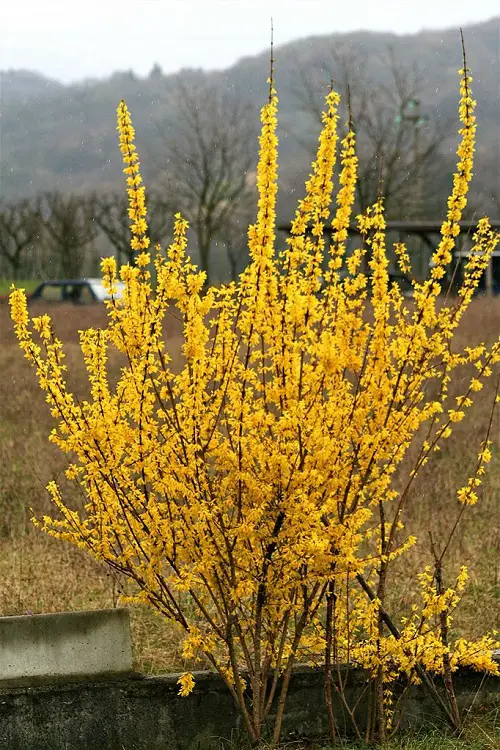
Botanical Name: Forsythia
USDA Zone: 5-9
Forsythia is a deciduous shrub with bright yellow flowers that bloom in early spring. It is a hardy plant that can grow in different soil types and can be used in gardens to add color and texture.
49. Snowberry
Botanical Name: Symphoricarpos
USDA Zone: 3-7
Snowberry is a deciduous shrub with white, waxy berries that persist into winter. It is often used in gardens to add winter interest or as a background plant.
50. Snow-in-Summer
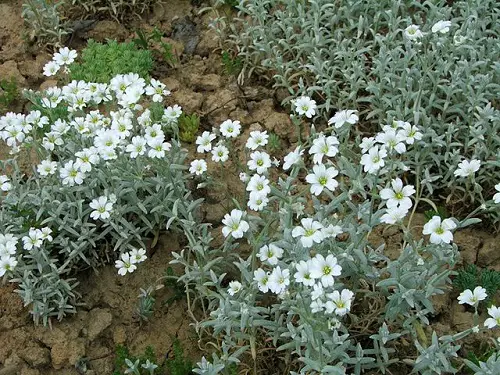
Botanical Name: Cerastium tomentosum
USDA Zone: 3-7
Snow-in-Summer is a low-growing perennial plant with small, silvery leaves and white flowers that bloom in late spring. It is often used as a ground cover or in rock gardens.
51. Daisy
Botanical Name: Bellis perennis
USDA Zone: 4-9
Daisies are perennial plants with bright, colorful flowers that come in various shapes and sizes. They are easy to care for and can be used in gardens to add color and attract beneficial insects.
52. Potentilla
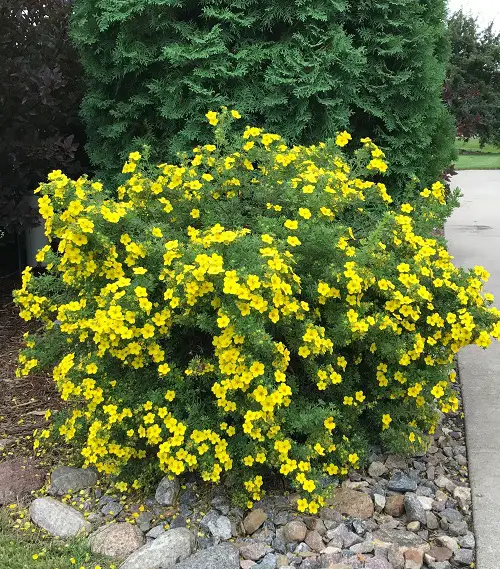
Botanical Name: Potentilla
USDA Zone: 3-7
Potentilla is a type of perennial shrub with bright yellow, red, or pink flowers that bloom throughout the summer. It is a hardy plant that can grow in various soil types.
53. Barberry
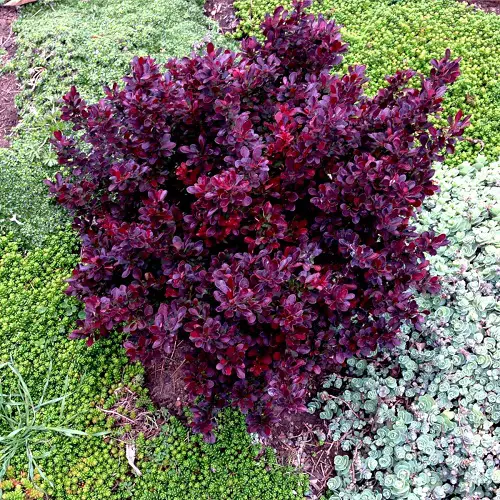
Botanical Name: Berberis
USDA Zone: 4-8
Barberry is a deciduous shrub with thorny branches and small, colorful leaves that come in shades of red, orange, or yellow. It is often used in gardens to create a hedge or as a background plant.
54. Hydrangea
55. Pachysandra
Botanical Name: Pachysandra terminalis
USDA Zone: 5-9
Pachysandra is a low-growing perennial plant with glossy, dark green leaves that can be used as a ground cover in shady areas.
56. Euonymus
Botanical Name: Euonymus
USDA Zone: 6-10
Euonymus is a shrub with colorful leaves that come in green, yellow, or variegated shades. It is often used in gardens to add color and texture.
57. Hellebore
Botanical Name: Helleborus
USDA Zone: 4-9
Hellebore is a perennial plant with leathery, evergreen leaves and delicate, bell-shaped flowers that come in shades of pink, purple, or white.
58. Artemesia
Botanical Name: Artemisia
USDA Zone: 4-9
Artemesia is a type of perennial plant with silver-gray leaves that can add texture and contrast to gardens.
59. Honeysuckle
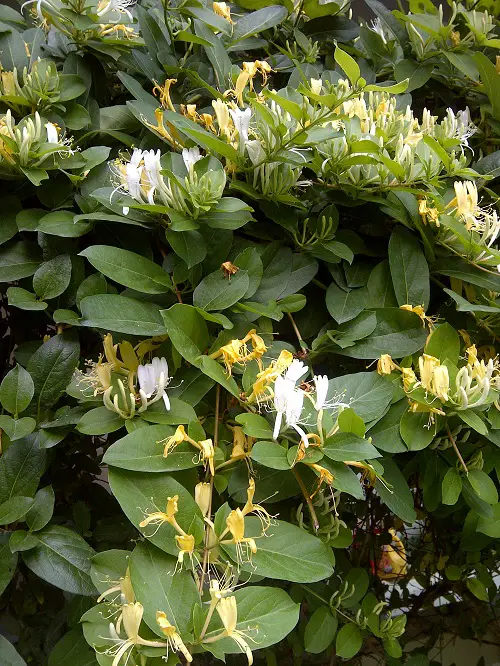
Botanical Name: Lonicera
USDA Zone: 7-10
Honeysuckle is a type of climbing plant with fragrant flowers in white, pink, or yellow shades. It is often grown on trellises or other supports and can be used to add height and fragrance to gardens.
60. Bluebells
Botanical Name: Hyacinthoides non-scripta
USDA Zone: 3-8
Bluebells are bulb plants with delicate, bell-shaped flowers that bloom in shades of blue or pink in the spring. They are often used in woodland gardens or as a ground cover.
61. Hibiscus
Botanical Name: Hibiscus
USDA Zone: 7-11
Hibiscus is a shrub with large, showy flowers that come in shades of pink, red, or white. It is often used in gardens to add color and attract hummingbirds.
62. Heuchera
Botanical Name: Heuchera
USDA Zone: 4-9
Heuchera is a perennial plant with attractive foliage in various colors, including green, red, and purple. It is often used in gardens to add texture and is one of the Best Deer Resistant Plants.
63. Apricot Mallow
Botanical Name: Sphaeralcea ambigua
USDA Zone: 6-10
Apricot Mallow is a perennial plant with bright orange or pink flowers that bloom in the summer. It is often used in gardens to add color and attract beneficial insects.
64. Vinca
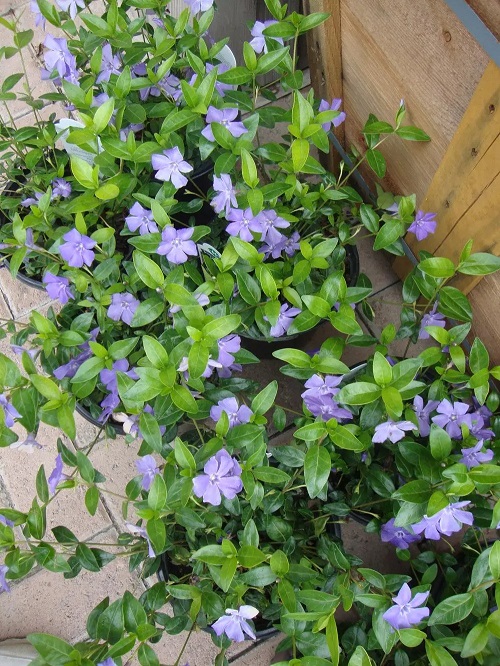
Botanical Name: Vinca minor
USDA Zone: 4-9
The Vinca is a low-growing plant with glossy, dark green leaves and delicate, blue-purple flowers. It is often used as a ground cover in shady areas and is easy to care for.
65. Weigela

Botanical Name: Weigela florida
USDA Zone: 4-8
Weigela is a shrub with showy, trumpet-shaped flowers that come in shades of pink or white. It is often used in gardens to add color and texture and can be grown in containers or as a hedge.
66. Wild Ginger
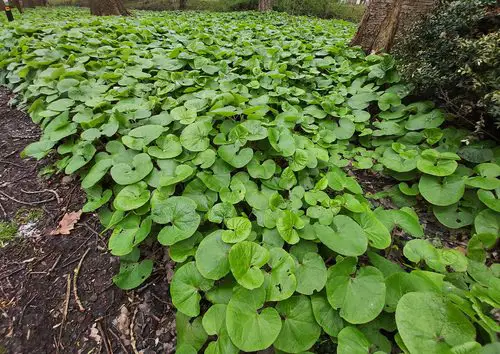
Botanical Name: Asarum canadense
USDA Zone: 7-11
Wild Ginger is a low-growing plant with heart-shaped leaves and small, inconspicuous flowers. It is often used as a ground cover in shady areas and is a low-maintenance plant.



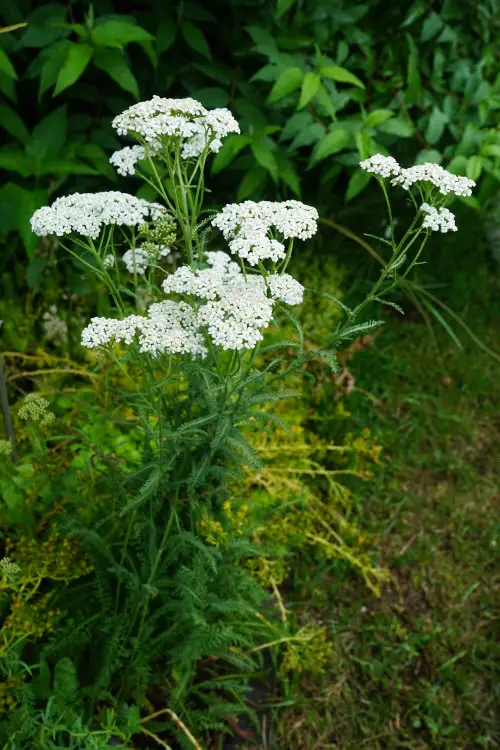
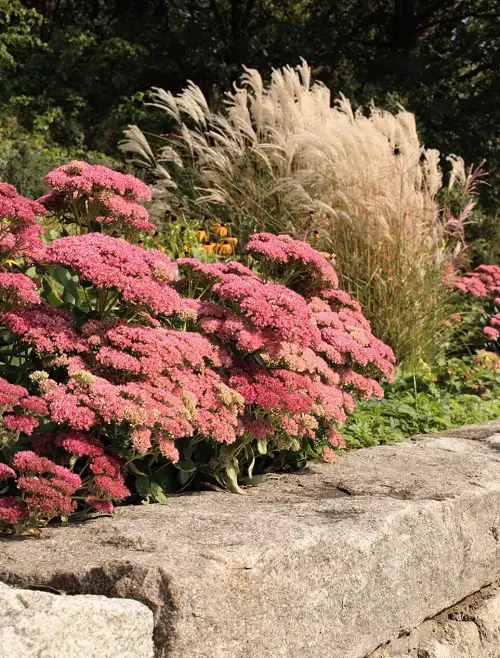

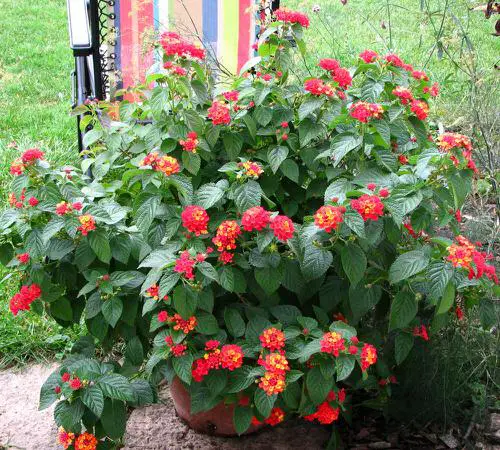

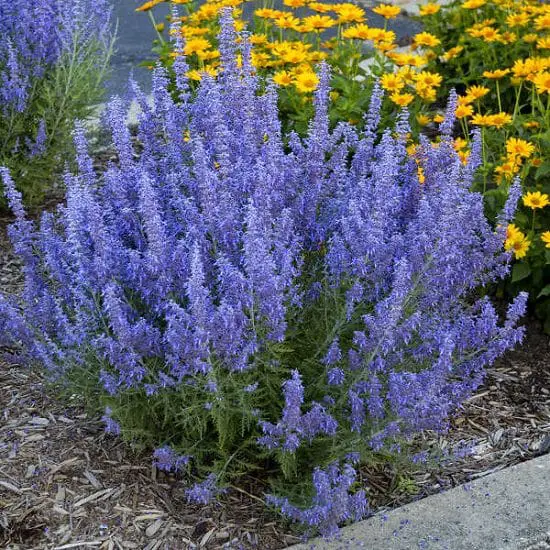
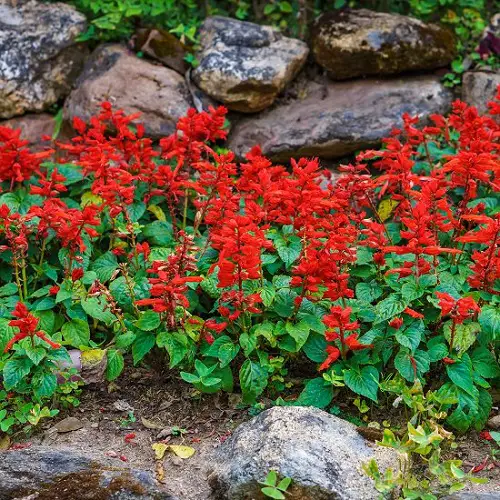
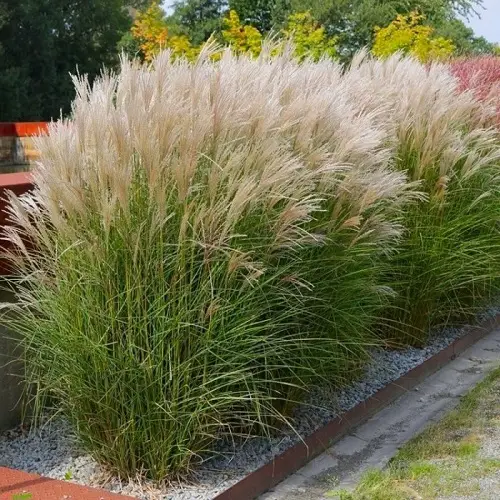
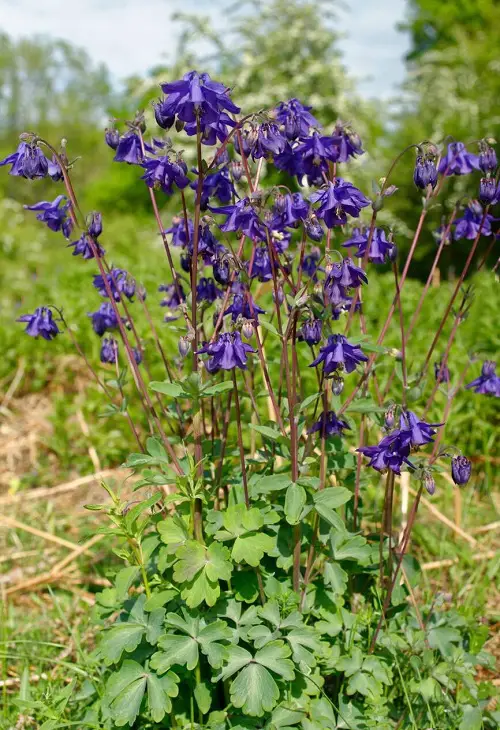
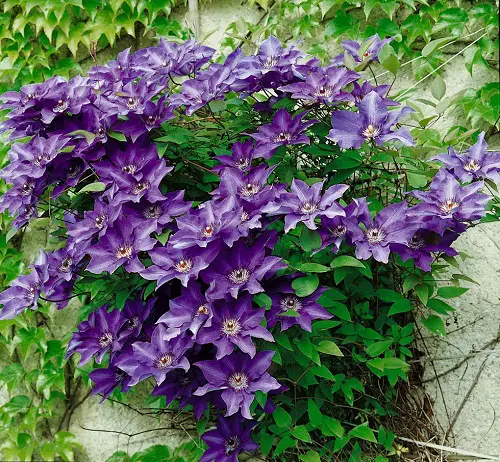

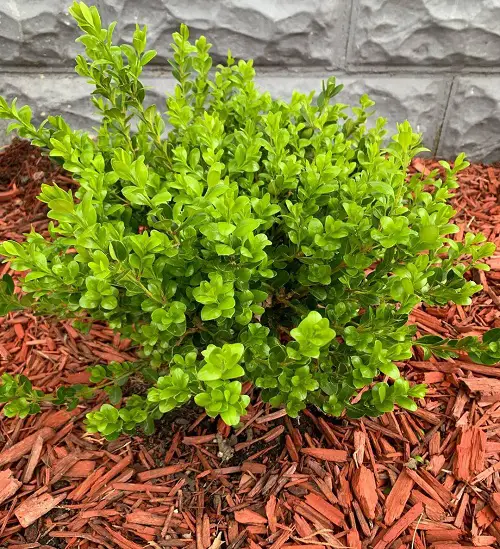
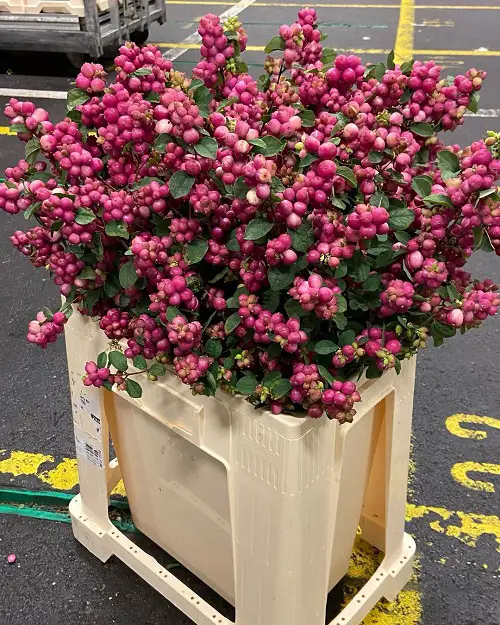
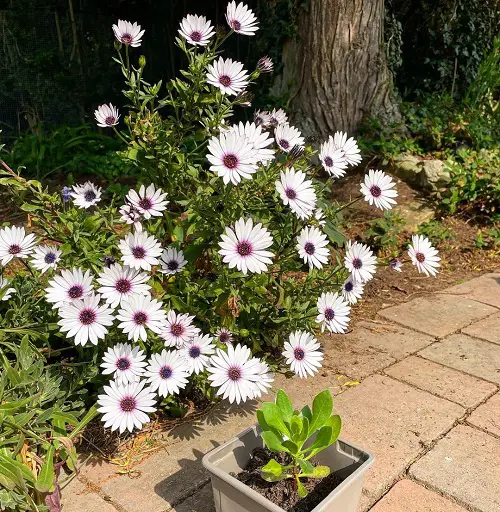
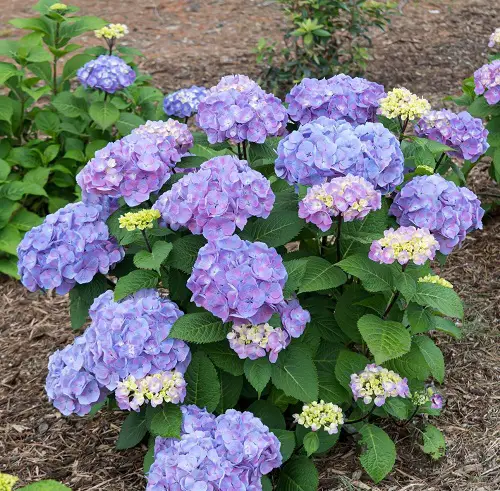
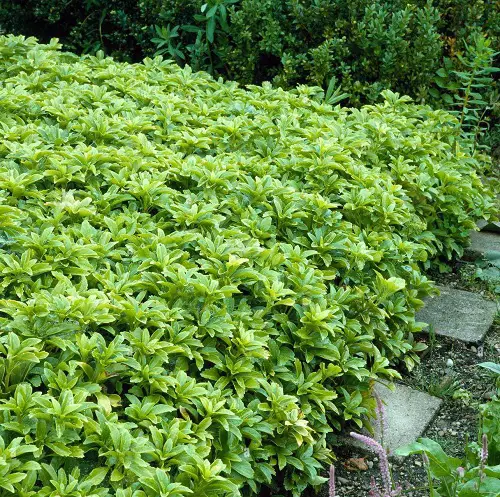
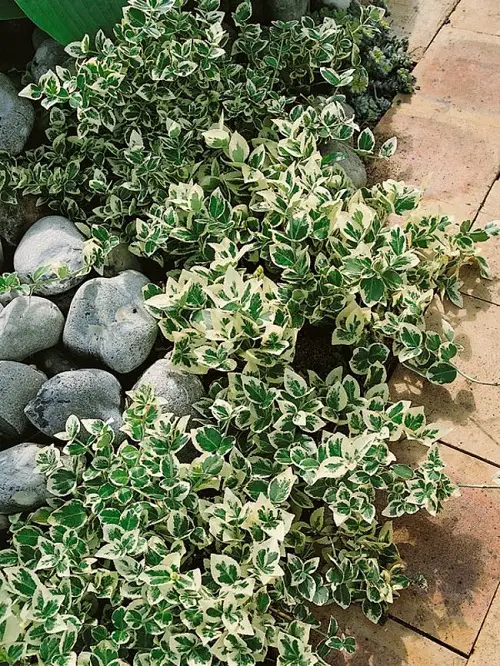
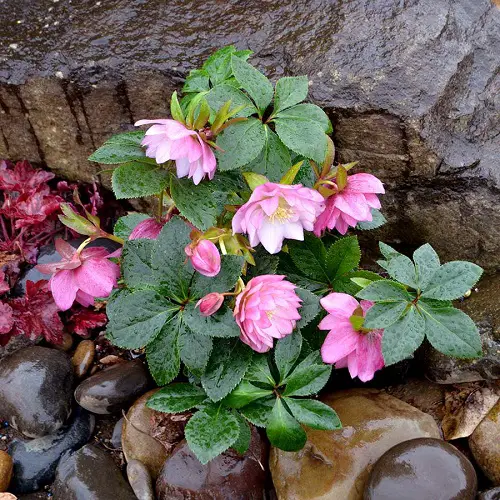
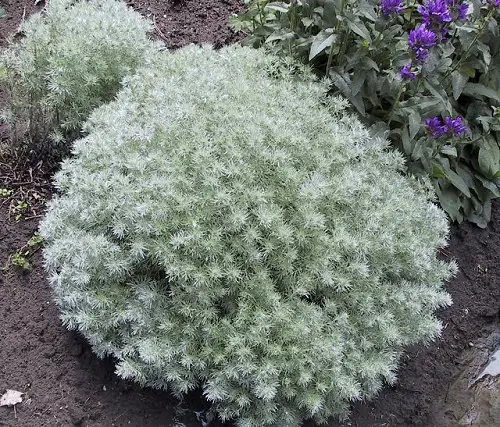
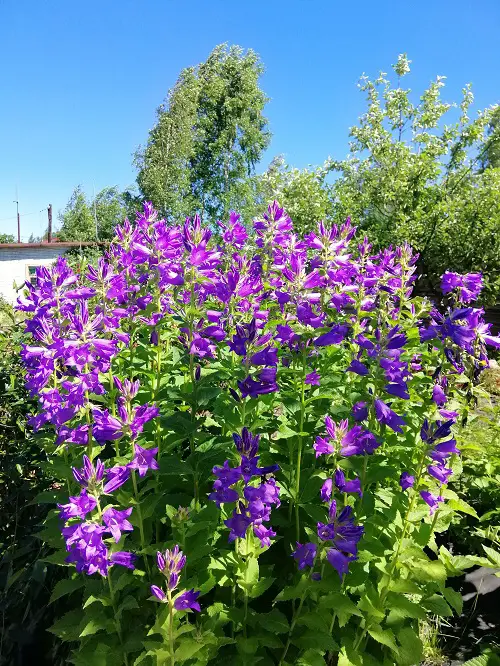

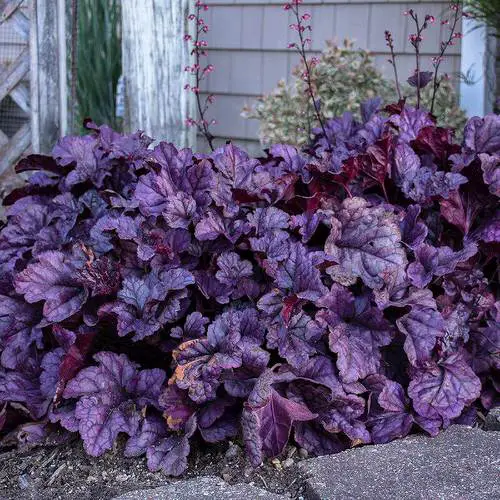
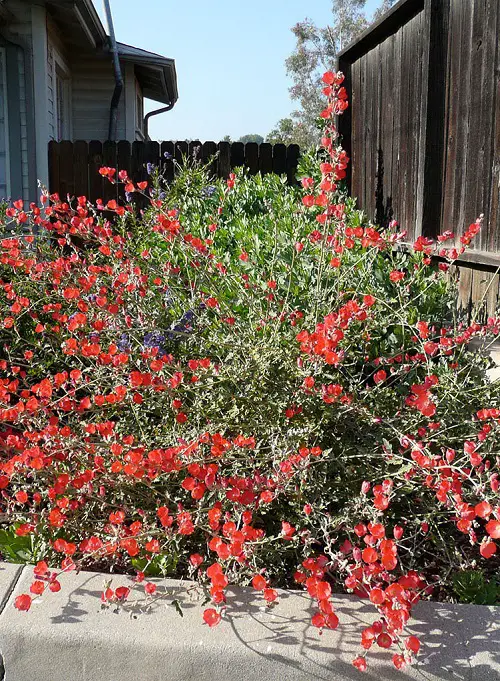

I love Balcony garden web.